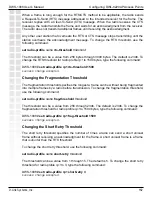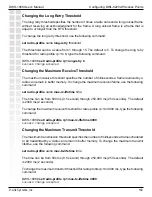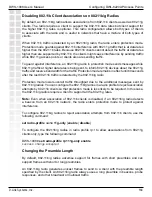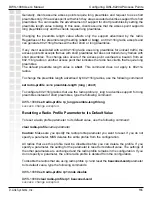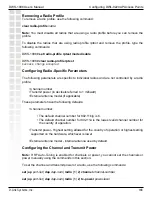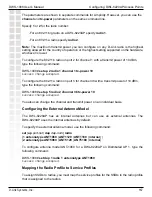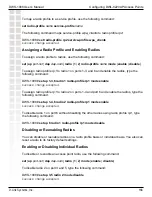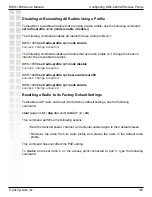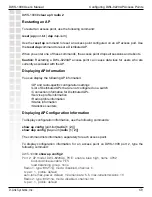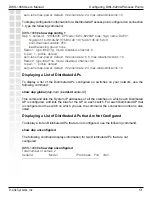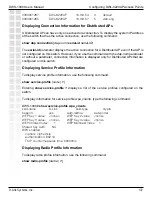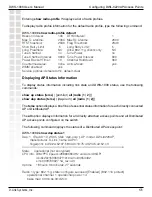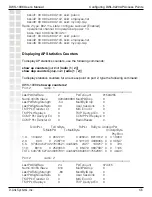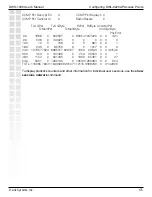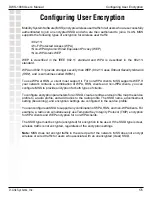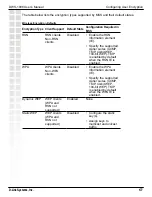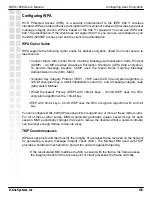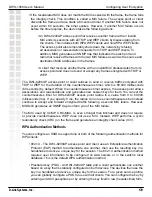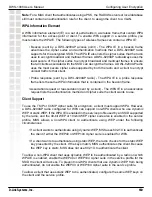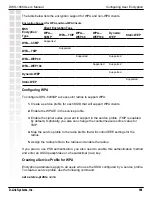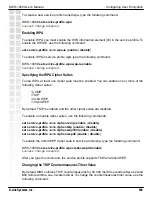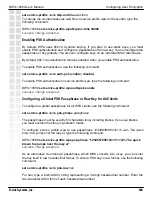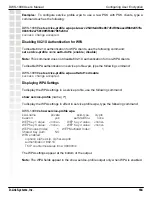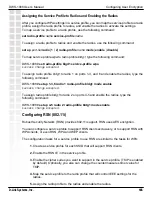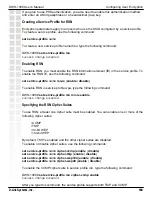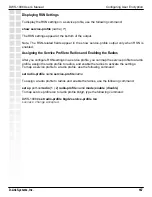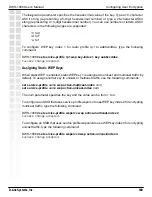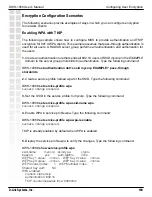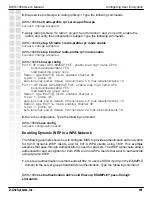
176
DWS-1008 User’s Manual
D-Link Systems, Inc.
Configuring User Encryption
Configuring User Encryption
Mobility System Software (MSS) encrypts wireless user traffic for all users who are successfully
authenticated to join an encrypted SSID and who are then authorized to join a VLAN. MSS
supports the following types of encryption for wireless user traffic:
• 802.11i
• Wi-Fi Protected Access (WPA)
• Non-WPA dynamic Wired Equivalent Privacy (WEP)
• Non-WPA static WEP
WEP is described in the IEEE 802.11 standard and WPA is described in the 802.11i
standard.
WPA and 802.11i provide stronger security than WEP. (802.11i uses
Robust Security Network
(RSN)
, and is sometimes called
WPA2
.)
To use WPA or RSN, a client must support it. For non-WPA clients, MSS supports WEP. If
your network contains a combination of WPA, RSN, clients and non-WPA clients, you can
configure MSS to provide encryption for both types of clients.
To configure encryption parameters for an SSID, create or edit a service profile, map the service
profile to a radio profile, and add radios to the radio profile. The SSID name, advertisement
setting (beaconing), and encryption settings are configured in the service profile.
You can configure an SSID to support any combination of WPA, RSN, and non-WPA clients. For
example, a radio can simultaneously use Temporal Key Integrity Protocol (TKIP) encryption
for WPA clients and WEP encryption for non-WPA clients.
The SSID type must be crypto (encrypted) for encryption to be used. If the SSID type is clear,
wireless traffic is not encrypted, regardless of the encryption settings.
Note:
MSS does not encrypt traffic in the wired part of the network. MSS does not encrypt
wireless or wired traffic for users who associate with an unencrypted (clear) SSID.
Summary of Contents for DWS-1008
Page 1: ......

